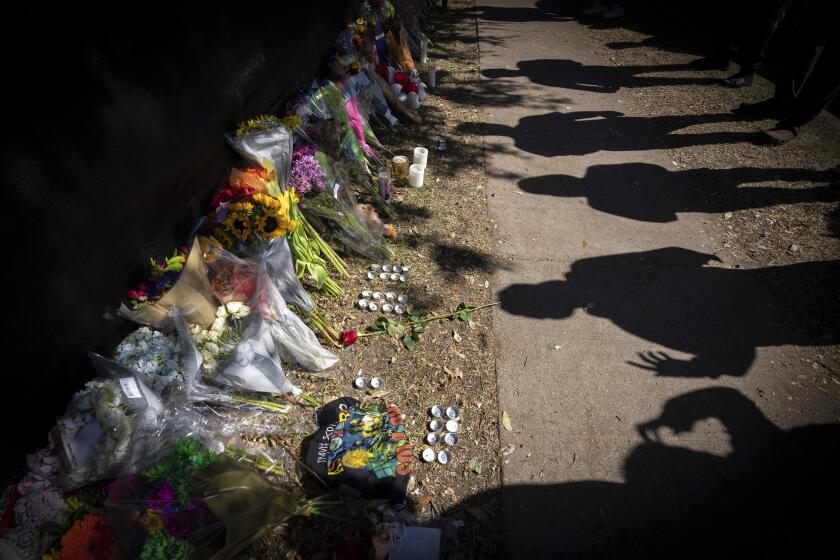France Looks to American Businesses for Funds to Make the Louvre Even Grander
France gave America its cherished Statue of Liberty 101 years ago, and it is now hinting that it would like the American people to return the favor.
It wants Americans to help rebuild the Louvre.
Emile Biasini, the Frenchman in charge of an ambitious plan to transform the famed museum into the “Grand Louvre,” recently gathered journalists from U.S. business publications for a luncheon of French haute cuisine in New York.
He explained how--and why--he wants Americans to help finance renovation of the Palais du Louvre, which dates to the 16th Century.
In 1793, shortly after the French Revolution, the Grande Galerie of the Louvre was officially opened. Housing such masterpieces as the Mona Lisa and the Venus de Milo, it is probably the most famous art museum in the world.
Needs Repairs
It also could use some repairs.
“We want to take the Louvre into the 21st Century, and there are enough needs at the Louvre to satisfy any American sponsor,” Biasini said.
As his guests dined on delicately poached salmon and fine wines, Biasini sought to convince them that Americans would be the major beneficiaries of the improvements because “more Americans visit the Louvre than Frenchmen.”
Of the 3.5 million visitors to the Louvre each year, 1.25 million, or 35%, are Americans, while about 1 million are French nationals, said Biasini, President Francois Mitterrand’s appointee to head the Grand Louvre project.
The problem, Biasini said, is that the Louvre has never been thoroughly converted from palace to museum. Its crowded displays have prompted various critics and guidebooks to suggest that the Louvre was little more than an elegant Napoleonic barn cluttered with dismally displayed canvasses.
“The Louvre has not been given the money it needs to improve its exhibition halls,” he said, complaining that, at present, “You can’t wash your hands, have a drink or sit while you’re having a tour.”
Tentative Plans
American money, Biasini said, could change all that.
But the French government has been reluctant to look abroad for funding until now, and even Biasini’s little New York luncheon was tentative, held before formal approval of his new fund-raising plans.
Louvre promoter Pierre Jean Gre said that part of the problem is that the French were afraid that Americans would shy away from a project under Socialist leadership, while a heated controversy raged in France over a government-financed Louvre annex now under construction.
The new addition will connect the seven exhibit areas with an underground tunnel illuminated by a controversial glass pyramid in the central courtyard of the U-shaped complex.
The pyramid will rise out of the ground at the heart of the Cour Napoleon at one end of the grand Parisian avenues, which run from the Louvre through the Tuileries gardens, past the Place de la Concord and up the Champs Elysees to the Arc de Triomphe. Detractors say the 12,000-square-foot glass structure will ruin the grandeur of the Louvre.
Designed by Pei
I.M. Pei, the prominent Chinese-American architect who designed the pyramid, was at first invited to the luncheon. But, after consulting with Pei, promoters decided that his presence would have called attention to the debate.
“The idea is not to draw attention to the pyramid but to finally give the museum the chance to become a real museum, perhaps the best in the world,” Biasini explained.
The French government has footed the $332-million bill for the first stage of the construction and renovation. But the second phase, which entails shuffling 60,000 of the museum’s 75,000 works of art to new displays over the 10-year project period, will require about $550 million, Biasini said.
More to Read
Start your day right
Sign up for Essential California for news, features and recommendations from the L.A. Times and beyond in your inbox six days a week.
You may occasionally receive promotional content from the Los Angeles Times.





